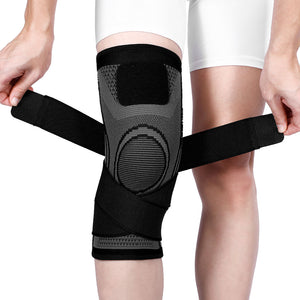When to Stop Wearing a Walking Boot?

When to stop wearing a walking boot? Let’s find out!
A walking boot, or a walking brace, is a specially designed medical shoe. It protects and stabilizes the foot and ankle after injuries such as fractures, severe sprains, tendon injuries, or post-surgical interventions. These boots feature adjustable straps to secure the foot in place, allowing for controlled mobility while minimizing additional damage. By redistributing weight, the boot reduces strain on the injured area and boosts the healing process. A walking boot provides the necessary support for patients, allowing them to engage in their daily activities at a reduced pace.

Knowing when to stop wearing a walking boot is crucial, especially for dealing with injuries such as wearing a walking boot for a broken foot. Following medical advice on its use and timing helps maintain stability while protecting the injured area. By contrast, discontinuing its usage before the recommended period can hinder the recovery process. This will eventually lead to complications, causing pain and delaying the healing process.
Here is what you need to know about walking boots and how they can help your foot during the road to recovery. We will also explore the best walking boots for ankle fractures, focusing on options that provide good support and comfort.
Situations Requiring a Walking Boot
Before we talk about when to stop wearing a walking boot, let's first discuss situations where they become a necessity. A walking boot is essential for various conditions to stabilize the foot and ankle. It promotes proper healing and allows for safe mobility.
Here are some situations where a walking boot is commonly used:
✧ Minor Ankle Fractures
For minor or stable fractures, the walking boot provides the necessary support to the injured area. The boot keeps the bones aligned, reducing movement and facilitating healing without needing a hard cast.
✧ Tendonitis
The support of the walking boot can benefit tendons in the foot or ankle that are inflamed. It reduces stress, allowing the tendons to rest and recover more effectively.
✧ Ankle Sprains
In cases of severe sprains, where ligaments are stretched or torn, a walking boot helps immobilize the ankle, preventing further injury and enabling the ligaments to heal properly.
✧ Toe Fractures
A walking boot can protect and support broken toes. It ensures they remain stable and are not subjected to additional pressure as they heal.
✧ Post-Surgical Recovery Periods
Following foot or ankle surgeries, a walking boot is frequently prescribed. It safeguards the surgical area while delivering adequate support for recovery. It maintains proper alignment and supports the healing tissues as they regain strength and function.

When to Stop Wearing a Walking Boot?
Identifying the right moment for when to stop wearing a walking boot is vital for a successful recovery, and this timing largely depends on two key factors:
✓ Doctor's Recommendations
Your doctor's advice is the primary guide on when to stop wearing a walking boot. Typically, the duration of wearing a walking boot ranges from 1 to 6 weeks.
The physician will gauge the seriousness of your injury, review your general health status, and consider your healing progress to determine the appropriate length of time. Adhering to these professional recommendations ensures that your injury is adequately supported throughout the critical recovery phases.
✓ Factors Affecting the Duration
The type and severity of your injury particularly influence when to stop wearing a walking boot. For instance, minor injuries like a mild ankle sprain may only require short-term use. However, more severe conditions, such as a complex fracture or post-surgical recovery, might require you to wear the boot longer.
Additionally, the healing process differs from person to person. While some patients may heal faster due to better overall health or adherence to rehabilitation exercises, others might need support for an extended duration. Monitoring these factors helps you and your healthcare provider decide when to stop wearing a walking boot and transition to regular footwear.
There you have it; now you know when to stop wearing a walking boot.
Choosing the Right Walking Boot: Short vs. Tall Walking Boots
When choosing a walking boot, you will have to choose between a short and a tall walking boot. It usually depends on the specific injury and the level of support needed.
Here is a quick comparison between the two types of walking boots.
- Short Walking Boots:These boots typically extend just above the ankle. They are ideal for minor injuries such as ankle sprains, toe fractures, or conditions requiring limited support and mobility. Short boots are lighter and more comfortable for everyday wear. They offer sufficient protection without restricting your movement, exceptionally suitable for people on the go.
- Tall Walking Boots:These types of boots extend up to mid-calf and provide more comprehensive support. They are suitable for more severe injuries, such as ankle fractures, post-surgical recovery, or extensive ligament injuries. Tall boots offer greater stability and support. They help immobilize the foot and ankle, which is crucial for the proper healing of more serious conditions.
Best Practices While Wearing a Walking Boot
When wearing a walking boot, following best practices ensures comfort and supports healing effectively:
✦ Ensuring Proper Size and Fit
An accurate-sized walking boot is crucial for greater comfort and stability. It should cozily fit without being too tight, allowing room for swelling. A well-fitted walking boot will also support the foot and ankle properly.
✦ Selecting Boots with Good Support and Cushioning
Opt for walking boots that offer adequate support and cushioning. This helps distribute weight evenly, reduces pressure on the injured area, and promotes better mobility. Look for features like adjustable straps and ergonomic designs.
Maintaining Cleanliness and Dryness to Prevent Skin Issues
Keeping the walking boot clean and dry is essential to prevent skin irritation or infections. Regularly inspect and clean the boot according to manufacturer's guidelines. Ensure your foot remains dry by wearing moisture-wicking socks and allowing the boot to air out when possible.
✦ Adapting to Walking Indoors Before Transitioning Outdoors
Practice how to walk in a walking boot indoors initially to get accustomed to its feel and limitations. Begin with short strolls and gradually increase your activity level as comfort allows. This gradual adaptation helps prevent overexertion and supports a smoother transition to walking outdoors.
Fivali Walking Boot – Better Support and Quick Healing

Our Fivali ankle support and walking boots are ideal for foot and ankle injuries due to their specialized design tailored for different areas of the foot. Specifically, we offer forefoot decompression shoes for injuries affecting the front of the foot and rearfoot decompression shoes for injuries to the rearfoot. These boots promote injury recovery by providing targeted support and compression.
For example, our Fivali Ankle Support for Walking, Help with Recovery – 1 Pack features triple straps, ensuring stability and reducing strain on the injured area. The non-slip design further enhances safety, providing confidence during use. Moreover, the comfortable fit also makes them suitable for prolonged wear. Whether dealing with forefoot or rearfoot injuries, Fivali walking boots cater to specific needs, facilitating a smoother healing process for the foot and ankle.
Our Fivali walking boots symbolize a commitment to both functionality and comfort in aiding recovery from foot and ankle injuries. Whether you are healing from a forefoot issue or a rearfoot injury, our Fivali walking boots provide stability and ensure every step counts towards a speedy recovery.
-
Posted in
Brace, Healthy Lifestyle, Joint













